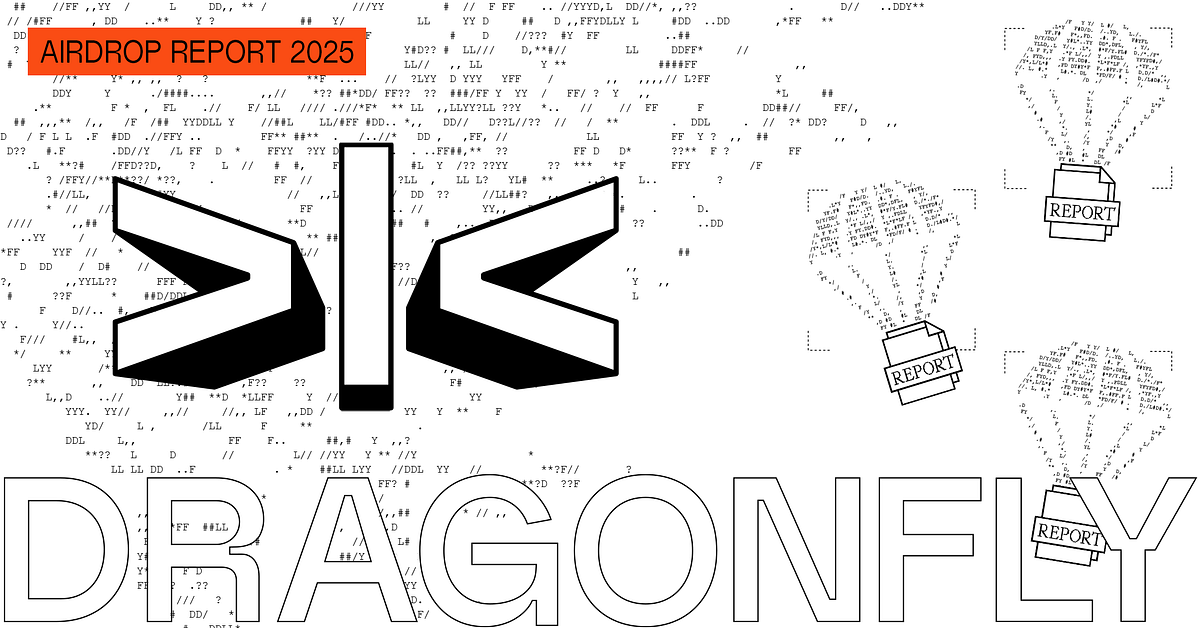The 2025 State of Airdrops Report: How the U.S. Got Sidelined — And What Comes Next | by Jess Furr | Dragonfly Research
Airdrops have been one of crypto’s most effective growth engines — distributing billions in tokens, driving decentralization, and onboarding millions of users. But while the rest of the world has continued to benefit, U.S. users and businesses have been largely locked out, missing out on billions in value.
Regulatory uncertainty forced projects to block U.S. participants, shift operations offshore, and redesign airdrop mechanics to avoid legal risks. The result? A massive gap between global crypto adoption and what’s happening in the U.S.
But the tides are turning. With the policy environment shifting, projects are rethinking how they distribute tokens, and new frameworks are emerging that could reintroduce the U.S. to the airdrop economy.
👉 Get the full report here: https://airdropreport2025.dragonfly.xyz
Airdrops By the Numbers
- $7.16 billion in total airdrop value analyzed across 12 major projects.
- Median claim: $4,600 per eligible wallet.
- CoinGecko’s broader dataset across 50 projects shows $26.6 billion in airdrop distributions globally.
But here’s the catch: U.S. users aren’t getting their share.
U.S. Users Were Shut Out — At a Huge Cost
- Up to 5.2M U.S. crypto users are geofenced out of airdrops.
- 22–24% of active crypto addresses belong to U.S. users — but they’re systematically excluded.
- Estimated $1.84B–$2.64B in lost airdrop revenue for U.S. users (and that’s just from our sample).
- Expand that to CoinGecko’s dataset? The total loss jumps to $3.49B–$5.02B.
And it’s not just users losing out — the U.S. government is, too.
The U.S. Lost Big on Tax Revenue
- $418M–$1.1B in federal tax revenue lost due to airdrop restrictions.
- $107M–$284M in state tax revenue gone.
- Tether alone made $6.2B in profits in 2024, but since it’s offshore, the U.S. missed out on $1.6B in potential corporate taxes.
The New Rules of Airdrops
This isn’t stopping airdrops — it’s changing how they work.
- Projects are restructuring token distribution — moving toward staking-based eligibility, phased rollouts, and stronger sybil resistance to ensure tokens go to engaged users.
- Regulatory discussions are evolving. There is growing recognition that airdrops differ from investment contracts, and new frameworks could allow for compliant participation by U.S. users.
- Airdrops are no longer just about user acquisition. The best projects are leveraging token distributions to drive governance participation, strengthen security, and retain long-term contributors.
What Happens Next?
Airdrops have been one of crypto’s most effective tools — but without clear regulations, they’re becoming harder to execute and less accessible to the very users who could benefit most.
There’s a path forward:
- Safe harbor protections for non-fundraising airdrops.
- Tax treatment that aligns with loyalty programs and equity incentives.
- Regulatory clarity so founders don’t have to choose between innovation and compliance.
If the U.S. doesn’t act, the industry will move forward regardless. Projects will continue shifting offshore, innovation will accelerate elsewhere, and U.S. users and businesses will be left playing catch-up.
Want to dive deeper? Read the full report here: https://airdropreport2025.dragonfly.xyz
— Prepared by Jessica Furr, Hildebert Moulié, Jane Perov, Demetrios Stellatos, & Phillip Bodine
Credit: Source link
